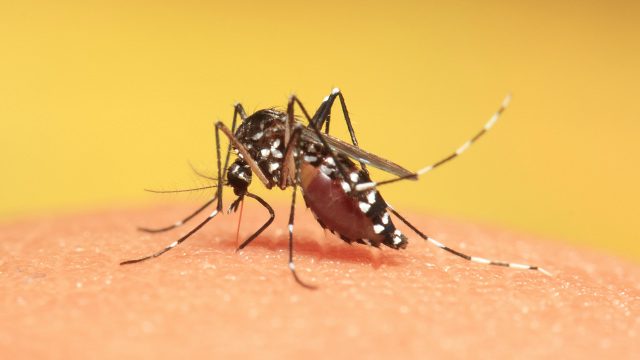SUMMARY
This is AI generated summarization, which may have errors. For context, always refer to the full article.

BAGUIO CITY, Philippines – The onset of rainy season caused the increase of dengue cases in all 6 provinces of the Cordillera Administrative Region and the city of Baguio, the Department of Health said.
Dengue surveillance report from January to August this 2015 showed a 103% increase in dengue cases in the region – or 2,383 dengue suspects compared to 1,176 for the same period last year.
|
Dengue suspects by province in Cordillera (January 1 to August 8/ 2014 and 2015) |
|||
|
Province |
2014 |
2015 |
% Change |
|
Abra |
212 |
289 |
37% increase |
|
Apayao |
85 |
252 |
197% increase |
|
Baguio City |
159 |
332 |
109% increase |
|
Benguet |
303 |
544 |
80% increase |
|
Ifugao |
82 |
85 |
4% increase |
|
Kalinga |
221 |
276 |
25% increase |
|
Mountain Province |
29 |
314 |
983% increase |
|
Non-CAR |
85 |
291 |
242% increase |
|
Total |
1,176 |
2,383 |
103% increase |
Source: DOH Cordillera Dengue Surveillance Report
At least 3 fatalities were reported this year compared to two deaths in 2014 due to dengue. The fatalities include:
- An 85-year-old male from Luna, Apayao, with a final diagnosis of dengue shock syndrome
- A 7-year-old from Rosario, La Union
- An 89-year-old male from Cervantes, Ilocos Sur
JE: Another mosquito-borne disease
As dengue cases continue to increase in the Cordillera, the health department is likewise wary of a possible case of Japanese encephalitis (JE), another serious disease caused by mosquito that the public should be aware of.
DOH Regional Director Amelita Pangilinan recently told reporters that the health agency have fielded workers to gather samples of mosquitos for laboratory tests in an aim to detect possible JE presence.
She explained that JE is caused by mosquitoes (Culex species) infected with the JE virus. Like dengue and chikungunya, JE still has no treatment.
According to Pangilinan, JE was first recognized in the late 1800s in Japan and has since spread across East and Southeast Asia, becoming a leading cause of childhood viral encephalitis.
Eradicating the breeding sites of mosquitos, Pangilinan explained, is important and easy. Disposing stagnant water should be effortless, she said.
Elsewhere, in July, a dengue outbreak was declared in Tuguegarao City in Cagayan province in the northern Philippines. The month before that, the town of Luna in Isabela province, in the same northern region, was put under state of calamity due to dengue.
The province of Negros Occidental also reported that as of mid-August, the cases of dengue had increased by 80.84% compared to the first 8 months of last year. A total of 774 dengue patients were admitted to different private and public hospitals from January 1 to August 15 this year, the provincial health office said. – Rappler.com
Photo of mosquito sucking blood from Shutterstock
Add a comment
How does this make you feel?
There are no comments yet. Add your comment to start the conversation.